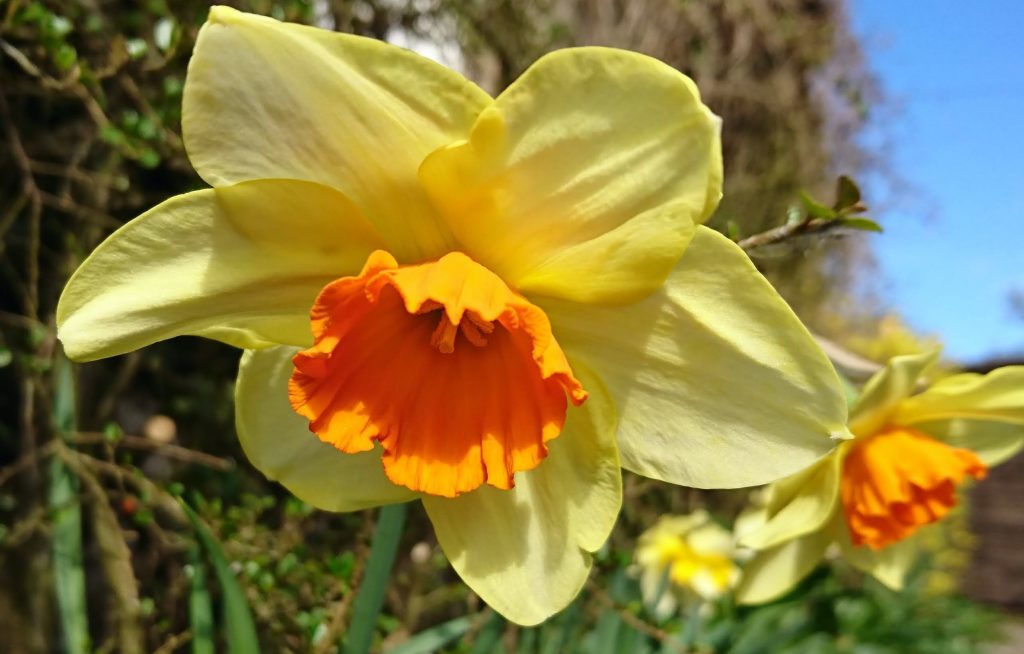On Friday, Scotland moved it’s Covid-19 instruction from “stay at home” to “stay local”, so I celebrated by visiting someone else’s garden; ‘Backhouse of Rossie’ who host a national collection of daffodils. It was my first garden visit in 6 months, a bright spring day, and it inspired me to come home and look more closely at my own little collection. This week, therefore, I give you daffodils. As a preview, I’ve no idea what the varieties are called. Happy to be educated if anyone else knows?
First up, near the house are some fairly traditional flowers, with a solid yellow colour and firm snout.

Next, hiding on the driveway, are just one little cluster of delicate, pure white flowers. The long thin petals make them look slightly startled. I love the simplicity of the colour and form.

Third, wider outer petals and a robust, almost pink-orange centre, allow these flowers to bring instant joy. How could you not smile when you see these lovely blooms?

For my fourth, we’re back to a fairly standard yellow trumpet, this time with pale outer petals, each one slightly twisted so that this flower has a much more three-dimensional aspect.

Fifth this week, a combination of wide, white outer petals, and bright orange centres should be stunning, but these flowers have a habit of pointing downwards, so I’m a bit less keen on these. They look great, like this, from a blackbird’s eye view.

Last for my mini daffodil festival, these flowers offer a frilly trumpet of the palest yellow, set against broad white petals. A little fussy, but they smell sweetly and are holding up well against strong cold easterly winds.

That’s my Six for this week. Here’s a bonus though, these, and a few other varieties, look lovely in a vase. If you live in Fife, a local important collection of daffs can be seen at Backhouse of Rossie (backhouserossie.co.uk) and you’re allowed to visit under current restrictions.

If you like Six on Saturday, do join in, there are lots of contributors on Twitter, and more via the regular blog from #SixonSaturday initiator, the great Propagator himself.